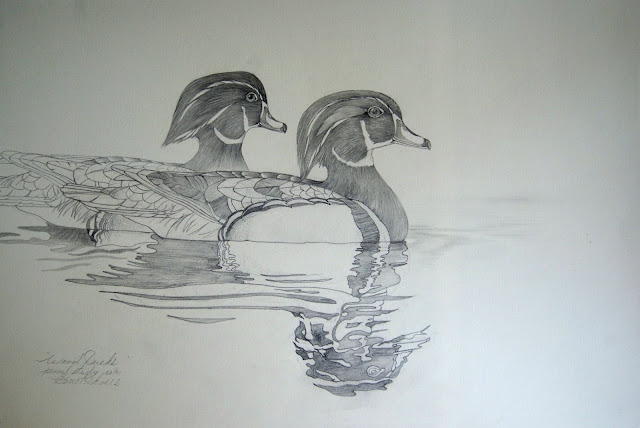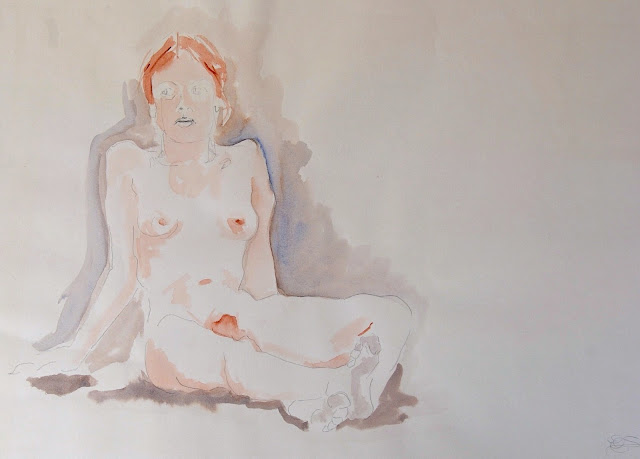In between scanning old
drawings and sketches for my new book I wander outside to enjoy the flower
garden, and think about cutting the lawn. Key words here are “think about
cutting the lawn”, as its been very hot over this way these past few days with
temperatures in the low 30s Celsius, and the prospect of a sun stroke is a real
possibility, at least that’s what I tell my neighbour who frowns at shaggy
looking lawns. It’s almost always very hot here towards the end of July into
the middle of August, and almost always hot, hot, hot, during the August long
weekend, which is this coming weekend. Reminds me of when I was starting out to
become an artist, a long time ago.
When I was starting out to
become an artist, and not all that confident about the quality of my work, I’d
search out various festivals, and group showings. Summer was the time of out of
doors festivals. Generally, this type of festival is put together as a tourist
event by a community more interested in making a profit from booth fees than
being concerned about the quality of the art work on exhibit. Most of the work
at these festivals range from very amateurish to a few high end artists, with a
lot of questionable craft work in between. However, we all had to start
somewhere, and for me it was a large outdoor festival in Barrie, Ontario, Canada, known
as Kempenfest. Back then it was a juried show, albeit the standard couldn’t
have been all that high as I was allowed, having paid my exhibitor fee, to
occupy a space and exhibit and sell my art.
Exhibiting at an outdoor
festival is quite a challenge. You’re assigned a space in which to exhibit and
expected to exhibit come rain, or shine. And that first year, rain and shine it
did! The exhibitors of today have elaborate tents, and so on to protect their
work. Back then, most of us didn’t, so when it clouded over and began to rain
cats and dogs, there was a flurry of activity as we rushed to cover our work
with sheets of plastic, and whatever else was handy. The clouds would pass and
the rain would stop, and once again out would come the scorching sun. If you were
exhibiting watercolours, or prints, under glass the space between the glass and
the artwork would steam over, then clear as the sun warmed things up. By the
end of the day with the fluctuating temperatures your watercolours and prints,
works on paper, would be all rippled, or warped. Disaster.
Most outdoor festivals are
held on long weekends, and by day three one’s enthusiasm was usually beginning
to wane. Of course, with the scorching heat one had a tendency to suffer from a
bad sun burn, but back then the sun, we’re told, was not as damaging as it is
today. Sales ranged from bad to very bad. But, at the end of the last day you
managed to somehow convince yourself that things could have been worse, and you
begin to look forward to next year when things will surely be much better.
I did manage a second year
at Kempenfest. It proved to be worse than the first, and I convinced myself
that there had to be a better venue, something less painful in which to exhibit
my work…..and there was! In the course of the following year I was juried into
The Buckhorn Wildlife & Art Festival, a very classy festival having extremely
talented artists. I was fortunate to be accepted as a exhibitor at this
festival for many years, and made many friends who would be helpful in steering
my career in what I believe was a right direction.
As
mentioned at the beginning of this posting I’m continuing to pull things out of
folders to be scanned for my new book, should I ever get time to sit down and
finish putting it together. Actually, going through the folders I’m quite
amazed at the amount of work that I’ve done over the years. Some of it’s not so
bad, at least I think so. Memories much of it. Here
are a few of my recent scans: -
 |
Chickadee on Milkweed Pen and Ink |
 |
Chickadee Pencil Drawing I |
 |
Chickadee Pencil Drawing II |
 |
Daisies Watercolour Painting |
 |
Dead Chickadee Pencil Study |
 |
Immature Barn Swallow Pencil Study |
 |
American Kestrel Mantling Pencil Drawing |
 |
Belted Kingfisher Pencil Drawing |
 |
Mallards - Algonquin Setting Graphite and Watercolour |













































